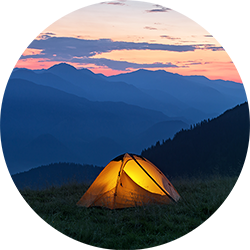Hokkaido is Japan’s northern frontier, where wide-open landscapes, snow-capped mountains, and colourful flower fields meet lively cities and local culture. You can hike in Daisetsuzan National Park to spot alpine wildlife, stroll through Furano’s lavender fields in summer, or relax in Noboribetsu’s hot springs. In Sapporo, you can taste fresh crab at Nijo Market, visit the historic
Sapporo Beer Museum, or explore the city’s streets lined with shops and cafés. Winter brings snow festivals, world-class skiing in Niseko, and frozen lake,s making Hokkaido one of the top 15 places to visit in Japan.
Top things to do in Hokkaido- Ski or snowboard in Niseko and Rusutsu during winter.
- Hike in Daisetsuzan National Park or enjoy Lake Shikotsu’s clear waters.
- Visit Furano and Biei for vibrant flower fields and rolling hills.
- Relax in Noboribetsu Onsen or other hot spring towns.
- Explore Sapporo’s Nijo Market, historic streets, and Beer Museum.
Hokkaido Temperature (Yearly Average): -7°C to 28°C — cold winters, warm summers, ideal spring and autumn.
Best Time to Visit Hokkaido: February for snow festivals and skiing, July–August for flower fields and mild summer weather.
Travel Like the Locals!-
Food to Try: Fresh crab, Hokkaido ramen, Jingisukan (grilled lamb), dairy products, and seafood bowls.
-
Where to Shop: Sapporo’s Tanukikoji Shopping Street, Otaru Canal area, local markets.
-
Where to Stay: Sapporo for city life and transport, Niseko for winter sports, Furano for countryside stays.
Did You Know?Hokkaido produces nearly half of Japan’s dairy and is famous for its fresh seafood, wide open landscapes, and unique seasonal festivals.





.jpg?w=60&h=60&dpr=1.0)
